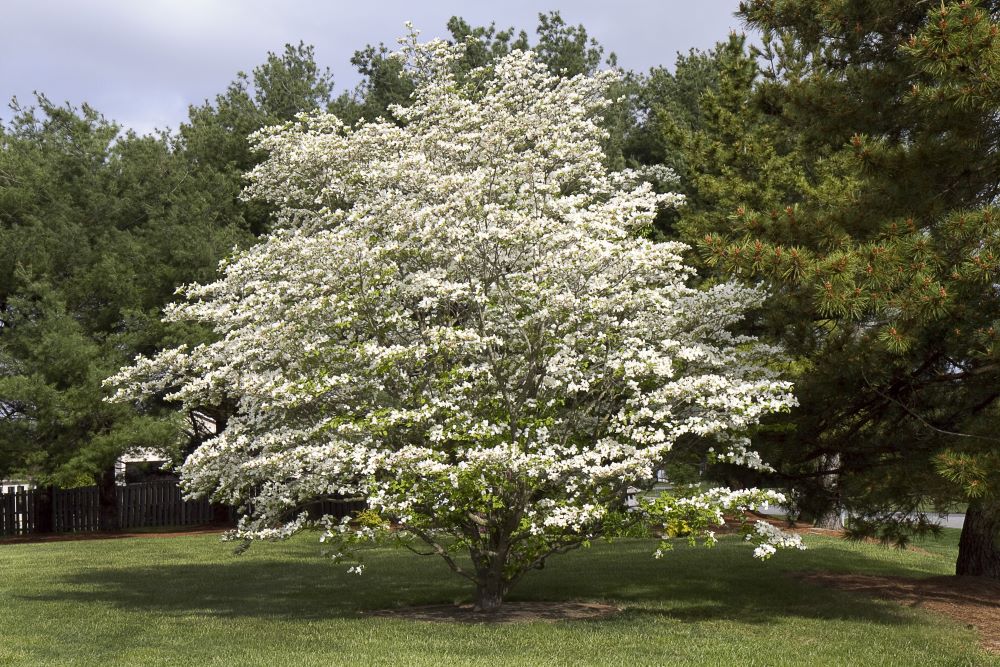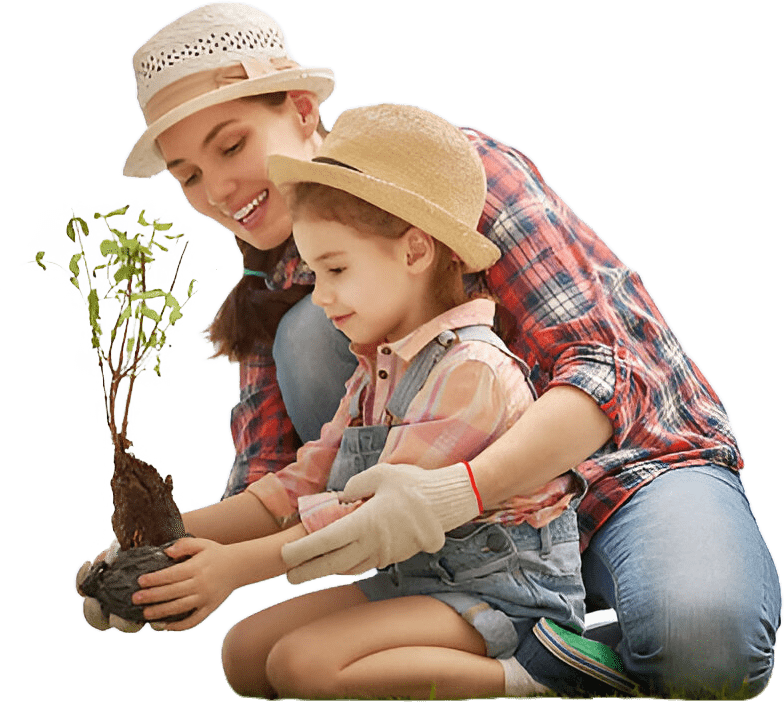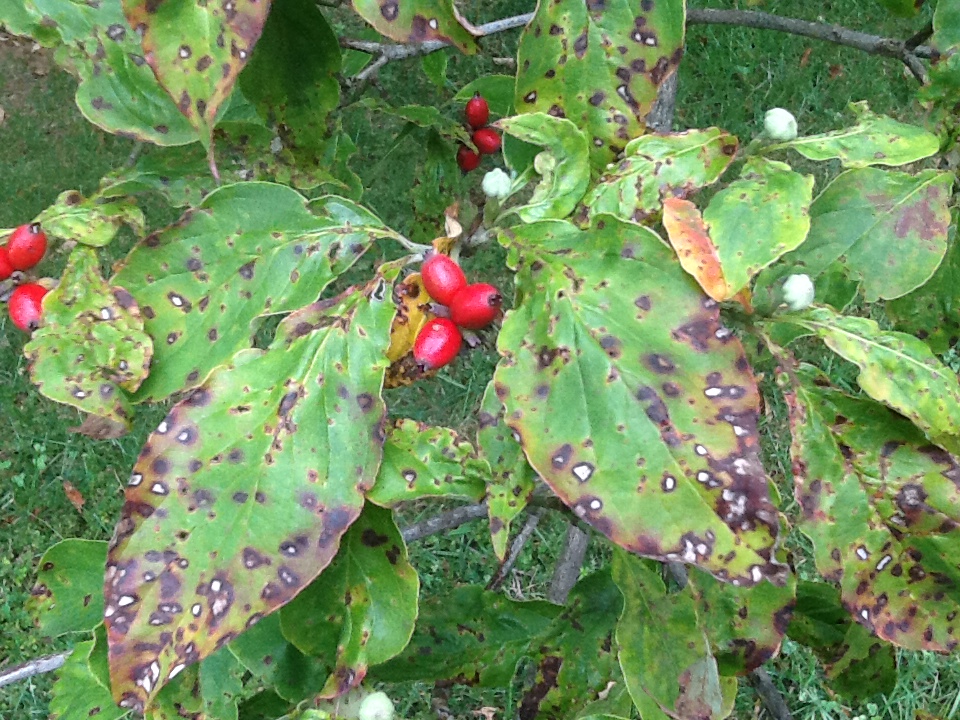
Is your dogwood tree looking wilted, spotted, and less than stellar? If so, it may be suffering from dogwood anthracnose. If you have a dogwood, read on to learn how to identify signs of the disease and protect your trees this year and in the future.
What is Anthracnose?
Dogwood Anthracnose, Discula destructiva, is a common fungal disease to which the native dogwood species are extremely susceptible. This disease spreads easily throughout landscape trees and causes disfigurement of foliage each year. The infection results in both aesthetic and internal damage. Anthracnose can kill dogwoods if ideal conditions are met.
Susceptible Trees:
Flowering dogwoods (Cornus Florida), and Pacific dogwoods (C. nuttallii) are susceptible to anthracnose. If a tree is stressed by drought/heat, winter damage, or physical damage it is more susceptible to anthracnose.
- Fun Fact: The flowering dogwood is Virginia’s state tree!
Other species of dogwood such as Kousa dogwood (C. kousa), Tatarian dogwood (C. alba), and Redosier dogwood (C. sericea) are resistant to this disease. They are a good option for landscapes that are prone to dogwood anthracnose.
Dogwoods are not the only trees affected by this disease. Other susceptible trees include; ash, oaks, sycamores, maple, and other deciduous hardwoods. In these species, anthracnose typically isn’t fatal but weakens the tree, attracting other deadly insects and diseases.
Signs Of Dogwood Anthracnose
Spring is the most common time for dogwoods to contract anthracnose; however, often the symptoms are not noticeable until late spring or summer. If you have a dogwood tree on your property you should routinely inspect it for signs of anthracnose such as:
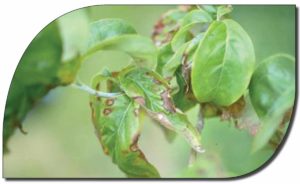
- Tan or brown leaf spots, which may have purple rings around them
- Wilting of Leaves
- Blotches on leaves
- Defoliation – early leaf drop
- Cankers on stems and twigs
- Dieback of entire branches/sections
- Death of the tree in severe cases
How Does it Spread?
Anthracnose spreads and thrives in wet conditions. In winter months it hides in fallen leaves and dead twigs until the fungus is awakened by rainfall. Then it spreads to the tree’s new growth. This makes it very easy for a tree that battled anthracnose last year to re-contract the fungus the following year. Additionally, the fungi’s spores can spread via wind and rain to nearby trees.
Dogwood Anthracnose Treatment
Once infected, dogwood anthracnose can be managed with routine fungicide applications. It is important to note that the damage that is already done to the tree’s leaves and stems can not be reversed, which is why prevention is so important when it comes to fungal diseases, especially dogwood anthracnose. You can rest assured your tree won’t look disfigured forever; if you keep up with fungicide applications to keep your tree from being reinfected the next spring, the new growth will be normal and won’t show signs of dogwood anthracnose.
- Fun Fact: During the American Civil War, the bark of dogwood trees was used to make tea to treat pain and fevers.
How to Prevent Dogwood Anthracnose

RTEC’s preventative anthracnose treatment typically includes 3 to 4 fungicide treatments throughout the spring and summer to keep Anthracnose from infecting the tree and following proper tree care maintenance.
If the timing of the first treatments has passed or if your tree is already showing signs of anthracnose, you can still keep your tree from being infected by starting our program as soon as possible.
The tips below are recommended because they can help your tree fight the fungal disease and lower the chance of reinfection, but are most effective in conjunction with fungicide treatments.
Bio-Stimulants:
Bio-stimulants contain a natural blend of bacteria, humic acid, sea kelp extract, and good fungi. This mix naturally fertilizes the soil and provides trees with the food they need to grow and maintain overall wellness. Bio-stimulants support the immune system of the tree so they are better equipped to resist and survive an attack of dogwood anthracnose.
Aeration:
It’s common for the soil in our landscapes to be compacted. Compacted soil doesn’t have room for oxygen and microorganisms to thrive. Soil compaction can lead to your tree not getting enough nutrients, oxygen, or water which stresses the tree. Stressed trees are more likely to develop diseases and succumb to them. If your tree is in a heavy traffic area, ensure your tree is best equipped to fight dogwood anthracnose by having soil aeration performed.
Perform Sanitation Raking:
This means raking up all the leaves underneath and surrounding your dogwood during the winter and disposing of them to keep anthracnose spores in the leaves from reinfecting the next year’s growth.
Don’t overwater your trees:
In the spring, make sure your soil drains properly. Fungi thrive in moisture, so you don’t want to overwater your trees. The soil should be moist (some dry patches are okay) but it shouldn’t be so wet you could make a mud ball.
Learn more about proper watering.
